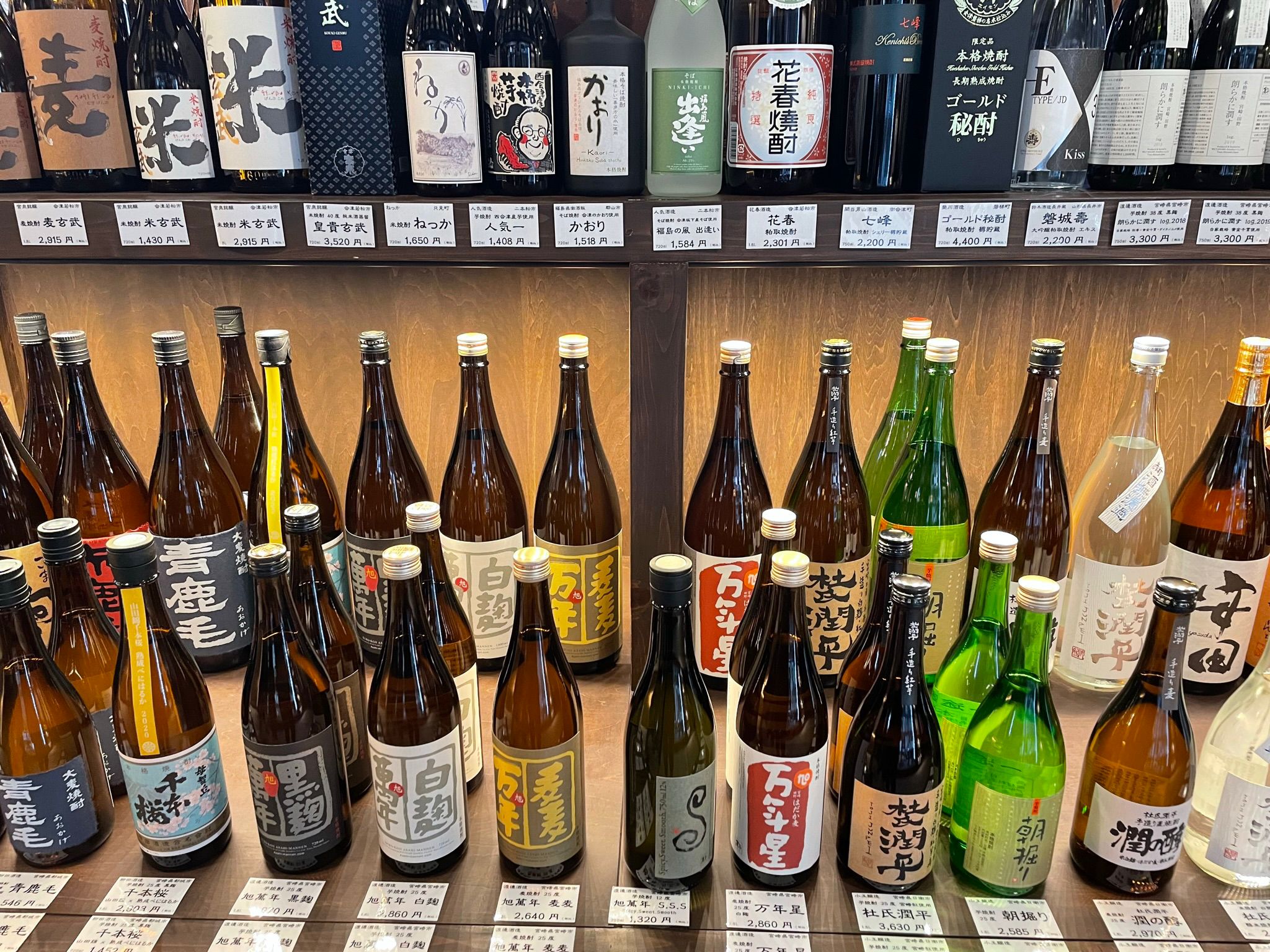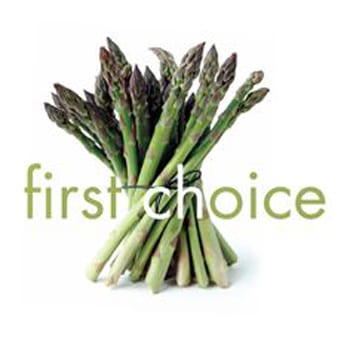The Chefs’ Forum’s Fukushima Food Tour
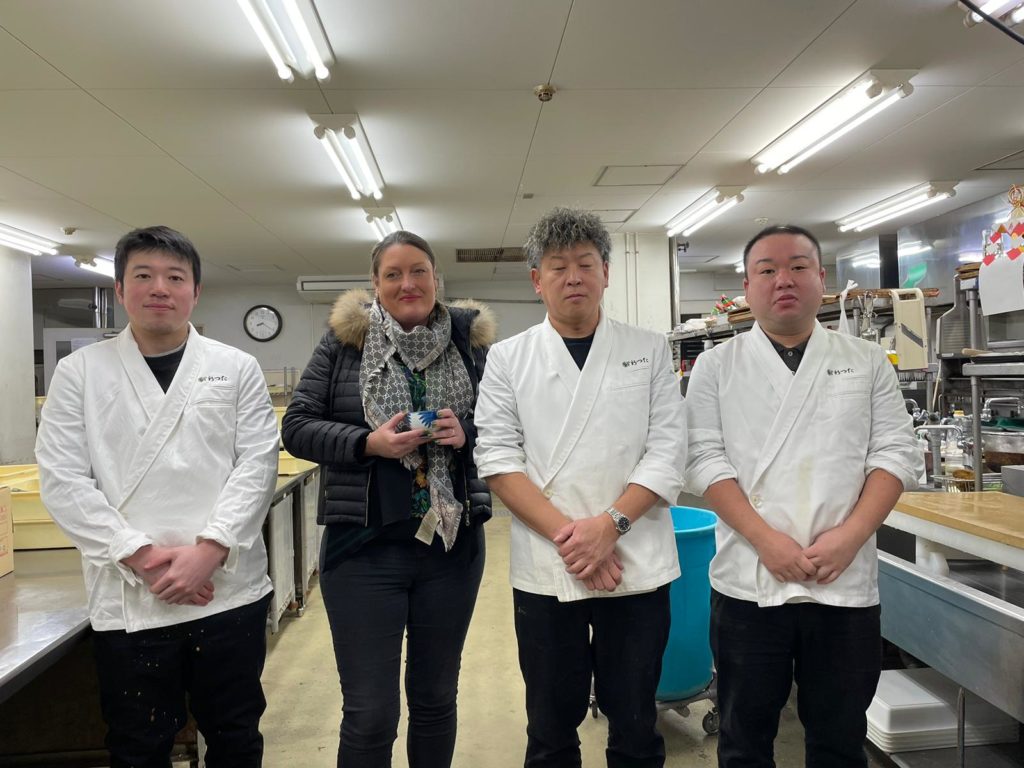 It’s not everyday we get invited to ‘Go East’ and discover the wonder that is Japan, so when we got the call, we jumped at the chance, here’s what Chefs’ Forum Founder, Catherine Farinha had to say:
It’s not everyday we get invited to ‘Go East’ and discover the wonder that is Japan, so when we got the call, we jumped at the chance, here’s what Chefs’ Forum Founder, Catherine Farinha had to say:
“I was nervous, I don’t mind admitting it. Going to Fukushima in Japan to visit the site of the 2011 nuclear disaster site was frightening but the closer we got the more I realised it was completely safe and the clean-up operation had been a huge success.
I was invited by The Ministry of Economy, Trade and Industry in Japan who were keen for us to witness and then report on how the Japanese nation has recovered from the nuclear meltdown. I saw this first hand not just in Fukushima but also in Tokyo. I extended the trip so I could further understand the Japanese lifestyle which is highly food-focused.
Over the last few years, we have been doing more and more work with Japanese ingredients by introducing them to British chefs who are very receptive to their heritage and skill. Japanese cuisine is popular in the UK but I wasn’t prepared for how little I knew about how Japanese culture and food fuse together. Indeed, it became clear as I travelled just how much Fukushima had devastated the Japanese food industry.
From the moment we got off the plane the whole world of what I knew about Japan was changed.
This fantastic trip was facilitated by Japanese food ambassadors Keiko Urakawa and Masaki Aosawa and we met at Haneda airport for my adventure culminating in witnessing the extraordinary clean-up work being done in Fukushima.
The reason for going there was not immediately obvious until I learnt that Fukushima Prefecture, basically a region or county, is similar to Kent in the UK. Fukushima is known in Japan as the ‘Kingdom of Fruit’. So, naturally, when the power station went into meltdown the whole area was devastated and evacuated and Japan lost much-prized food ingredients. It was this regeneration that both Kaiko and Masaki were keen for me to see.
However, after a 14-hour flight I was jet-lagged, hungry and need of something to eat. We went to a shopping centre on the way into Tokyo and had sushi and ramen. I need to put this into some form of context because the way it sounds does not do the beautiful, flavourful food we ate justice in any way. The equivalent restaurant does not exist in the UK. We ate the freshest sushi I have ever eaten with the most delicious tuna I could imagine along with bowls of ramen that completely transformed my opinion of this staple Japanese noodle broth. The food was all in front of us on mini conveyer belts, made popular in the UK by Yo Sushi! and others, but it still managed to be impressive. And this was just the first of many meals we ate that were transformative. If I say that you really have to visit Japan to appreciate just how good it is, you get the picture. I can try and describe what we encountered but I feel sure, I will fall short.
After a good rest at our base-camp hotel in Asakusa, a famous Tokyo downtown, and some rather fine street-side yakitori, we were ready for everything that followed.
Our first visit was to a Daikon farm in Aizuwakamatsu, an inland district of Fukushima, some 70 miles from the nuclear site. This really brought home to me the sheer scale of what happened in 2011. The disaster didn’t just affect the land around the actual nuclear site but a much more widespread area. We met Junichi Hasegawa at Hasegawa Farm to see his growing facility and learn how this much-revered winter icicle-shaped Japanese radish is grown and preserved.
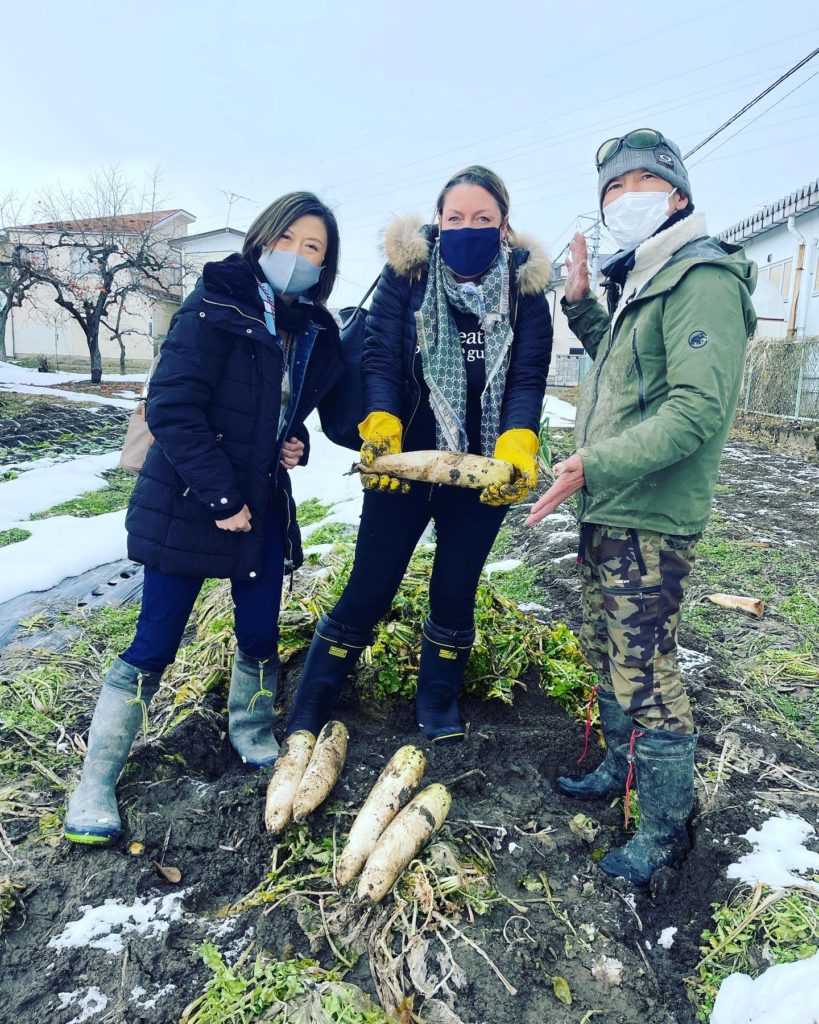 Junichi is a 9th generation rice (Koshi-hikari), cabbage and Daikon (Mooli) grower and has a passionate and impressive field to fork story.
Junichi is a 9th generation rice (Koshi-hikari), cabbage and Daikon (Mooli) grower and has a passionate and impressive field to fork story.
He was six when he started helping his father on the farm with bagging 30kg of rice at a time and driving the sleigh to carry the freshly harvested daikon. His three sisters also helped too.
His beloved father, Michi-no-eki died when he was 21 leaving him to take the reigns of the family business.
Through shadowing his father for a decade and a half he was well-equipped and experienced in cultivating, harvesting and storing his produce. In the winter months the snow-covered terrain acts as a natural cold store or larder to hold the daikon radish at a chilled temperature, under soil, until the spring.
In addition to daikon, Junichi also grows cabbage and edamame beans and supplies seven local restaurants with all the produce they could possibly wish for. In addition, he personally-delivers rice and produce to local schools, directly benefitting and nourishing the 110,000 strong local community of Aizuwakamatsu.
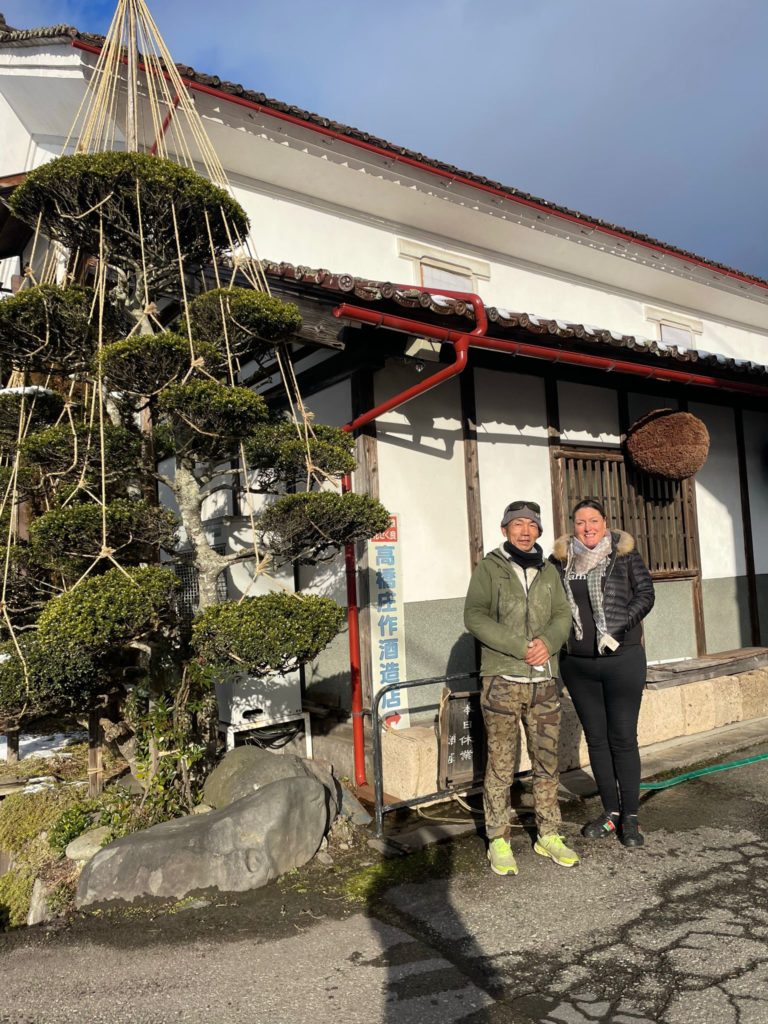 His rice is also used by local sake brewery, Takahashi Shosaku, just ten minutes down the road. We popped-over to the brewery to see where the magic happens and were delighted to see crates of the new batch being wheeled into vans for distribution across the prefecture and beyond. Plump spheres of cedar twigs (known as sugi-dama) were hung from the eaves of the brewery to signify the launch of the latest batch of sake – Again, another time-honoured custom (probably a religious offering to the gods) seen in the winter at sake breweries throughout Japan. As the sake matures over the course of the year and becomes more mellow and rounded, the cedar dries out and turns from vibrant green to deep brown.
His rice is also used by local sake brewery, Takahashi Shosaku, just ten minutes down the road. We popped-over to the brewery to see where the magic happens and were delighted to see crates of the new batch being wheeled into vans for distribution across the prefecture and beyond. Plump spheres of cedar twigs (known as sugi-dama) were hung from the eaves of the brewery to signify the launch of the latest batch of sake – Again, another time-honoured custom (probably a religious offering to the gods) seen in the winter at sake breweries throughout Japan. As the sake matures over the course of the year and becomes more mellow and rounded, the cedar dries out and turns from vibrant green to deep brown.
Today, sugidama are not only put up by breweries, but are also a popular decoration for izakaya restaurants and sake shops. If you see one in the streets of Tokyo, you can be sure that the establishment cares about sake!
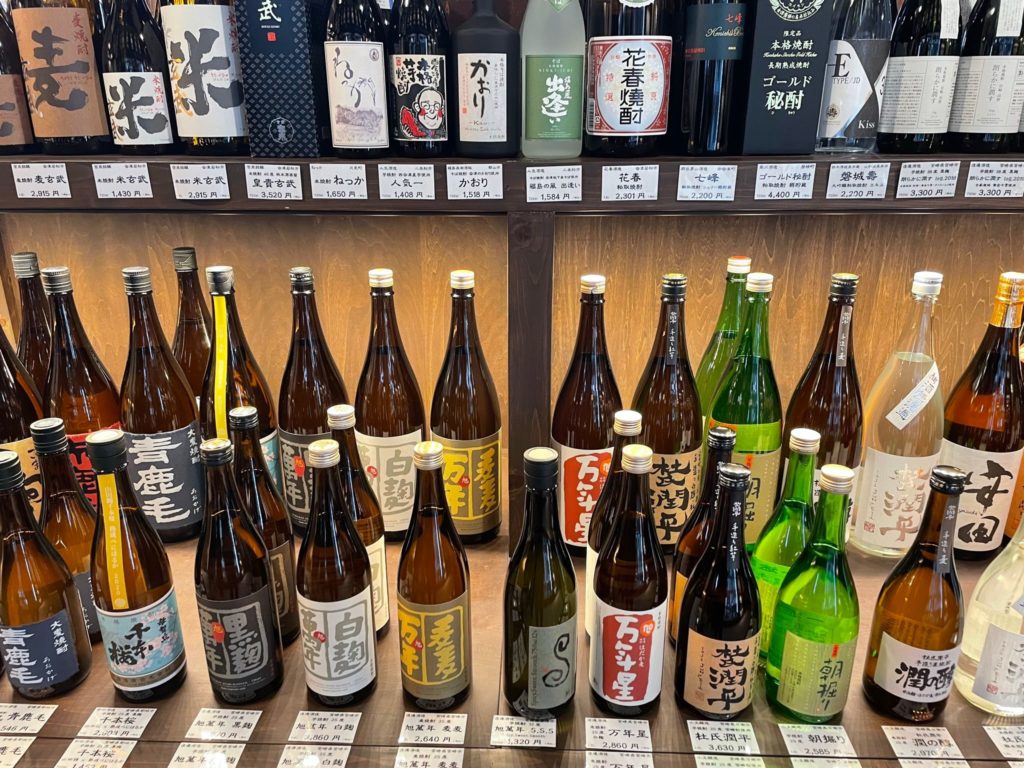 Takahashi Shosaku brewery lovingly creates the ‘local water’ loved by so many, sold in local sake shops and farm shops. Once the sake is brewed, the by-product, sake lees (likened to coffee chaff) is then returned to Junichi as a natural fertiliser to nourish his crops – There really is no wastage and all businesses, producers and growers club together to support each other, working in perfect harmony, which was so lovely to see.
Takahashi Shosaku brewery lovingly creates the ‘local water’ loved by so many, sold in local sake shops and farm shops. Once the sake is brewed, the by-product, sake lees (likened to coffee chaff) is then returned to Junichi as a natural fertiliser to nourish his crops – There really is no wastage and all businesses, producers and growers club together to support each other, working in perfect harmony, which was so lovely to see.
We were really impressed when he told us that, like The Chefs’ Forum, he goes into local schools and colleges to talk about traceability, provenance and is existentially proud to tell the students that he produces six tonnes of rice a year (both for eating and sake production) and in addition, that he also grows cucumber in the summer as well as aubergine and edible chrysanthemum.
Junichi wants children to learn about the produce that surrounds them, so that the varieties and species will remind them of where they are from, acquire a sense of place and make them want to return to Aizuwakamatsu to enjoy them in the future – a true taste of home.
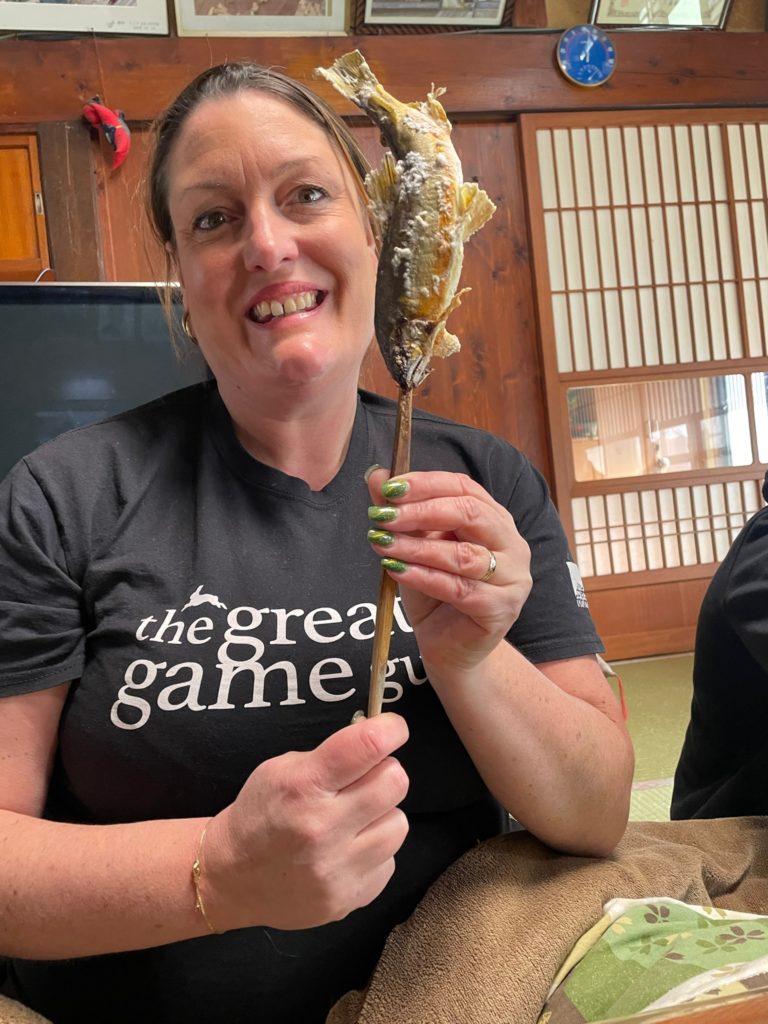 Junichi warmly invited us into his home, where we were very honoured to join his family at their traditional low, heated, table (Kotatsu) to share a family-style feast of ‘sweet fish’ cooked over charcoal on natural wooden sticks in sand, accompanied by edamame beans dressed in sake, dashi broth and garnished with roe. This is a delicious dish, traditionally enjoyed on New Years Day and said to boost prosperity and fertility.
Junichi warmly invited us into his home, where we were very honoured to join his family at their traditional low, heated, table (Kotatsu) to share a family-style feast of ‘sweet fish’ cooked over charcoal on natural wooden sticks in sand, accompanied by edamame beans dressed in sake, dashi broth and garnished with roe. This is a delicious dish, traditionally enjoyed on New Years Day and said to boost prosperity and fertility.
We were then given some beautiful chrysanthemum squash as a parting gift to take away with us which was grown naturally when seeds fell from a Portuguese cargo ship, or so the story goes.
Everything in Aizuwakamatsu has a back story and is steeped in family history and surrounded by captivating stories and tradition.
The Hasegawa family also host regular ‘Food camp tours’, welcoming young chefs and tourists to Hasegawa Farm to let them try their hand at harvesting daikon, rice and cabbage from his 12 hectares of farmland. They also have the opportunity to sample delicious dishes, cooking-up a feast with his produce in his purpose-made ‘kitchen car’.
He has recently collaborated with French-trained Chef Manabu Sato, Chef Patron of local restaurant Teppanyaki Aizuya of who often wows guests with specially curated menus, championing Junichi’s fresh produce, married with delicious Fukushima Wagyu.
Junichi’s passion for top chefs showcasing his produce to guests participating in his food camps is clear to see, he said
“Chef Sato bakes the most delicious Fukushima vegetables of the day to create delicious dishes with the minimum amount of seasoning, largely carrot, Morning glory (a Chinese water spinach), my daikon turnip, turnip leaf, stick senor (mini stick broccoli), radish and sweet potato. He steams ginseng for two hours and his sweet potatoes are baked and the sweetness fully extracted, before he kisses them with special teppanyaki dressing. I want to give my guests the whole field-to-fork experience, so they know exactly where the food comes from, how it is harvested, then prepared to make a delicious fresh produce banquet.”
Junichii deems it his personal mission and responsibility to get more chefs involved in championing Fukushima produce, connecting people with agriculture and shouting about the wonderful natural flavours and the love and care that goes into growing and producing the prefecture’s rich larder.
All this joy, however, was a prequel to the main event: Fukushima Daiichi Nuclear Power Station. Nothing could prepare me for this and the emotions it brought up. Fukushima is the 3rd biggest prefecture or state – There are 47 prefectures in Japan.
Twelve years have passed since the 2011 Great East Japan Earthquake, Tsunami and resulting nuclear disaster and the prefecture of Fukushima is making steady progress in its reconstruction and revitalisation.
Fukushima has long been famous for its agriculture, known since old times as one of Japan’s premier rice-growing regions, also earning the prefecture the affectionate nickname of, ‘The Kingdom of Fruit’.
Fukushima’s agriculture suffered drastically after the earthquake and the nuclear power accident that followed, but as a result of safety measures implemented through national efforts, foods produced in Fukushima have been recognised as safe by the Food and Agriculture Organisation of the United Nations (FAO), as well as by many individual countries, and the prefecture’s exports are increasing. Japan hopes that more and more people will enjoy the safe and delicious produce grown in Fukushima for years to come.
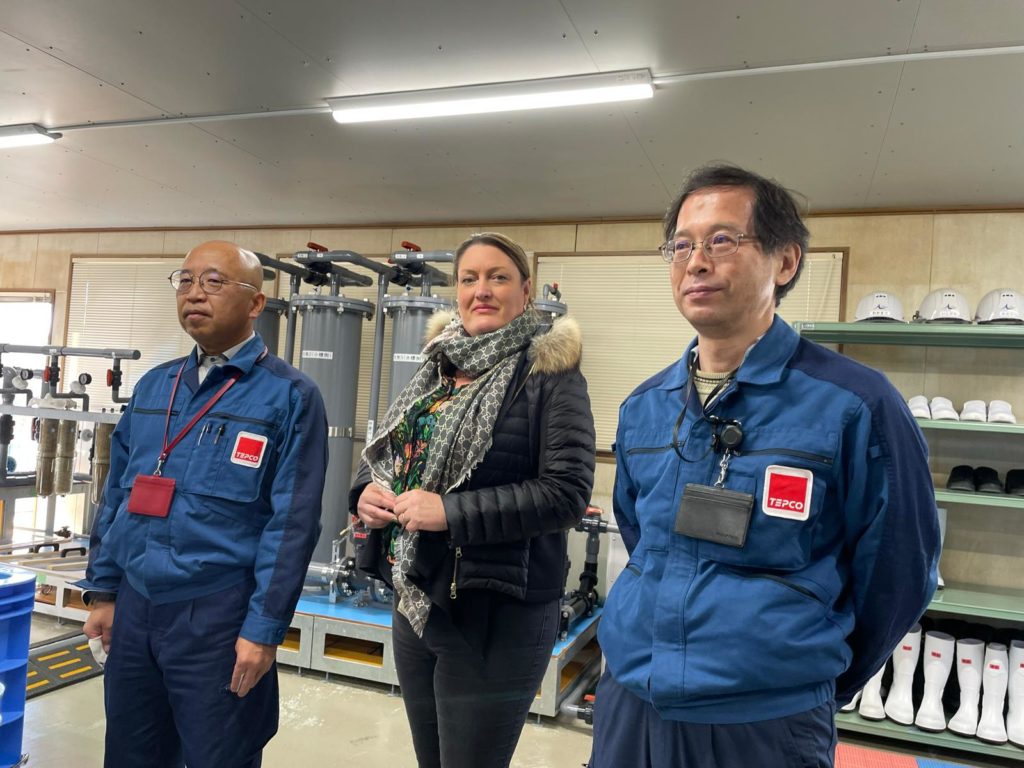 Keiko and Masaki arranged for us to visit TEPCO’s Fukushima Daiichi Nuclear Power Station site, where we were given a fascinating private guided tour to showcase the clean-up work of the Tokyo Electric Power Company. TEPCO has started to keep fish and at its Fukushima No. 1 nuclear power plant to allay concerns about its plan to release treated radioactive water stored there in huge tanks into the ocean. Since we returned news has broken that this water will be released at Easter.
Keiko and Masaki arranged for us to visit TEPCO’s Fukushima Daiichi Nuclear Power Station site, where we were given a fascinating private guided tour to showcase the clean-up work of the Tokyo Electric Power Company. TEPCO has started to keep fish and at its Fukushima No. 1 nuclear power plant to allay concerns about its plan to release treated radioactive water stored there in huge tanks into the ocean. Since we returned news has broken that this water will be released at Easter.
The clean-up team showed us around and explained that their main aim is to dispel public anxiety and instead to reassure the local community that they are working tirelessly in a huge operation to purify the contaminated water so that fish can thrive and negative environmental and health impacts are nullified.
Local residents and fisheries industry officials, who were worried about the scheme and damage to marine life caused by the release, suggested that the TEPCO team keep fish at the utility to demonstrate the safety of the water. This is what we went to see and it was impressive.
The water treatment process removes most radioactive substances, but not tritium, a rare and radioactive isotope of hydrogen with a half-life of about 12 years. The water is then diluted with seawater to reduce the tritium concentration to less than 1,500 becquerels per litre, one fortieth of the legal standard.
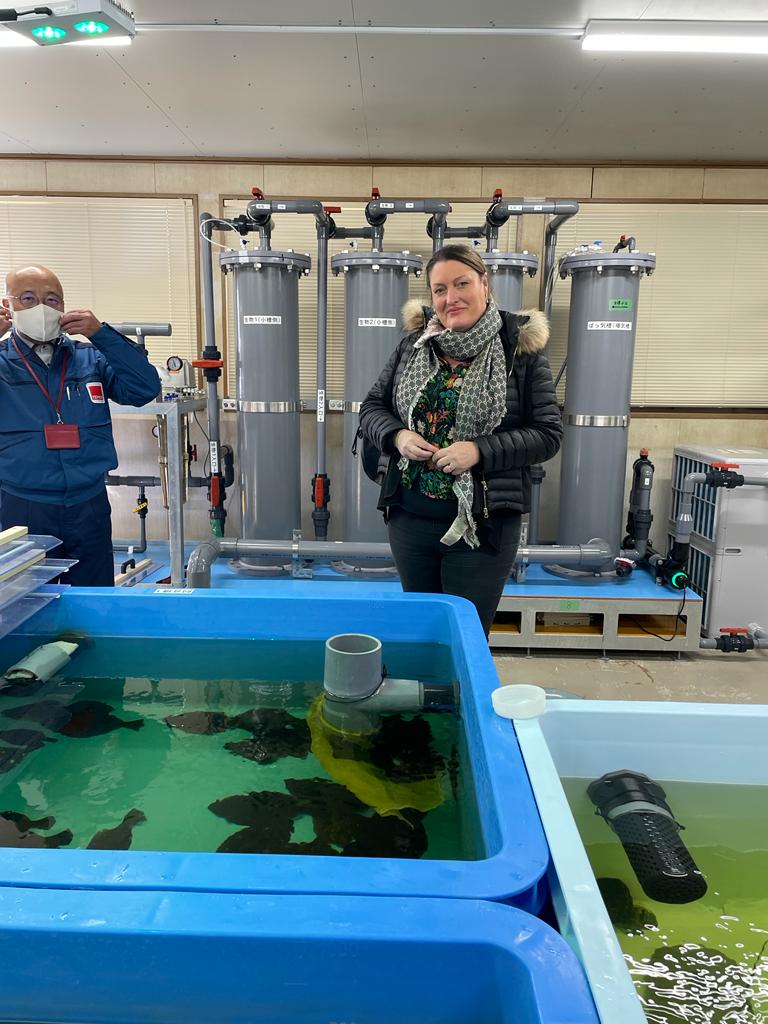 On experts’ advice, TEPCO has decided to culture flatfish and abalone on a trial basis, as both species can be readily caught off the coast of Fukushima Prefecture and grown easily. Preliminary farming started last March in seawater at the plant. In September 600 flatfish and 600 abalone were introduced and grown in the water. In a control/contrast experiment, where some are being raised in ordinary seawater, others will be grown in treated, diluted water containing tritium at the same level of the water that will be discharged.
On experts’ advice, TEPCO has decided to culture flatfish and abalone on a trial basis, as both species can be readily caught off the coast of Fukushima Prefecture and grown easily. Preliminary farming started last March in seawater at the plant. In September 600 flatfish and 600 abalone were introduced and grown in the water. In a control/contrast experiment, where some are being raised in ordinary seawater, others will be grown in treated, diluted water containing tritium at the same level of the water that will be discharged.
The concentration of tritium and other substances in the fish are analysed, as are their growth rates, in two sets of tanks. TEPCO hope to counter negative publicity by showing that fish can grow healthily in the treated water. We were shown the healthy-looking red gills of an anaesthetised flounder to prove that the water has now been purified to a safe standard. However, further external auditing and accreditation by marine authorities is needed to instill faith in the local fishing and farming communities.
Having visited the site and seen firsthand the regeneration and cleanup process I was impressed with the work that has been done. There was a lot of pride in the team effort and I am excited to begin work on brining UK chefs to Japan to witness and taste the wonderful ingredients of this ancient part of Japan.
Back in Aizuwakamatsu, Junichi demonstrated the purity of the water by showing us photos of swarms of fire flies over his rice fields at dusk. He said that they are only attracted to pure water, so it is clear that there is no contamination in Fukushima’s water and he’s confident his crops are safe. This is a great natural sign that the future is bright for Fukushima, the largest rice-producing prefecture in Japan.
The nuclear disaster in 2011 led Junichi to lose confidence in farming, but he kept planting new crops in the hope that one day the soil would renew itself and his faith paid off. Contaminated layers of soil were removed and blighted tree bark, shaved-off. All of the toxic waste is being stored at a specialist facility under strictly controlled conditions.
Now that Junichi has confidence that his livelihood can continue he plans to create a seedbank to preserve the genes he needs to increase yield and resist disease. Seedbanks are also used to increase tolerance against drought, improve nutritional quality and the taste of crops.
We really enjoyed our food tour of Fukushima and all of the fantastic people we met, who are striving to reinstate ‘The Kingdom of Fruit’ back to where it was before 2011 on the global produce stage. We are so very grateful to Keiko and Masaki for giving us this once-in-a-lifetime opportunity to discover traditional Japanese food, regional specialities and meet such passionate producers.
We heartily recommend Fukushima produce and will be working on a chefs trip to visit the region in the coming months – Do let us know if you are interested in being involved.
